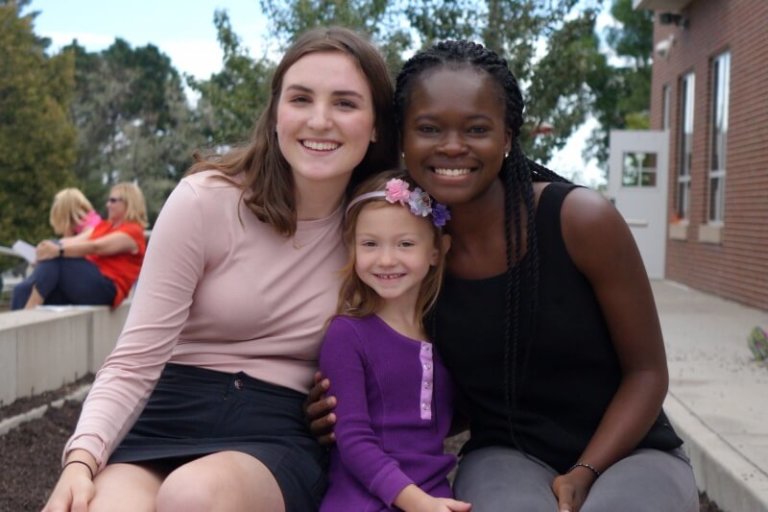Walking across campus on any given day, I can encounter students of all ages. Occasionally, this means being nearly run over by an exuberant Lower Schooler! More often, it simply means observing with pride, wonder and even amusement that our school is home to students aged 4-18. That is a rare environment indeed and one that makes Colorado Academy very special.
There are so many reasons to feel proud of this multi-age environment. Our all-school assemblies are one of the consistent community-building features of our school year. On the first day of school, for example, all grades gather in the large gym for a program culminating in reading all the names of the seniors of that year’s graduating class. Soon after, the Homecoming assembly in September brings all ages together to get psyched up for the weekend’s games and activities. The all-school obstacle course contest at that assembly pits the three divisions (and faculty) against each other in a friendly competition while some lucky student dons the Gus the Mustang mascot outfit and leads cheers. Homecoming Day follows and the many events of that day reach every student and family. At other times of the year, we gather in the gym or theatre to hear a musical performance or some other all-ages program. That sense of “one-ness” really helps solidify the feeling of a PK-12 school.
At those all-school assemblies and at several other times of the year, seniors sit with their kindergarten buddies. One of the school’s favorite signature programs, the senior-kindergarten buddy program has been generally acknowledged as one of the highlights of the senior year and culminates with a wonderful field trip together to the Denver Zoo in May. Kindergartners feel very important to have an older student looking after them and giving them extra attention while the seniors learn a lot about patience and the responsibility of looking after a much younger child. Other buddy programs exist throughout the school in all divisions, including the freshman-senior connections that start on the first day of school, get reinforced through our peer-leadership program (called CLT), and lead to fun activities in various advisory gatherings throughout the year.
Another place that the full spectrum of students come together is on our school buses. I don’t know too many other schools that have ridership with such varied ages on numerous buses that cover the Denver metro area. The big kids and little kids have to learn to ride along together and live harmoniously in that contained environment. With a few minor exceptions, this long-established mode of transportation works seamlessly because once again there is a mutual understanding and appreciation of the roles that each play. Just as in a family dynamic, older students look out for younger ones, while the younger ones can remind the older students a thing or too about the innocence and sweetness (and sometimes unpredictable activity) of early childhood.
For years our Faces of Diversity club has led inclusivity workshops in the lower and middle schools as a way of giving back to the community and helping younger students develop cultural competence. Those programs have been highly successful and again reinforce the community values and connections. Other clubs also reach across divisions. Ruthie Angevine, class of 2020, started one such club with first grade teacher Margit Patterson last year. The “First Grade Mentors” club brings upper schoolers and first graders together on a regular basis to assist with reading, writing and other learning activities. Ruthie states that “One of the many reasons I love first grade reading club is that often times high schoolers get so caught up in test scores and homework that going to hang out and read with a first grader can put things in perspective, and make you feel excited to see them learn.” She and others in the club spend many hours in the Lower School offering support and companionship.
The fact that we have fourteen different grade levels on one big campus does not automatically produce a feeling of cohesion. We have to be intentional in some of our day-to-day activities to ensure that we take advantage of this unique situation. So it does require that we make our PK-12 community a point of emphasis. As a result, I have long admired the way our Upper School students take their roles as older brothers and sisters so seriously. Of course, many students have themselves grown up on this campus and feel very comfortable on campus and with all the people who come and go here. Even students who have not been here since kindergarten or who don’t actually have a sibling in another division appreciate the concept that they are role models and act accordingly.
It’s a CA tradition that underscores the values we espouse in this community.
